Flow of Ink: Mastering Chinese Ink Painting Techniques
Chosen theme: Chinese Ink Painting Techniques. Step into a serene studio of paper, ink, and breath, where each stroke carries intention and history. Explore techniques, stories, and exercises that unlock expressive lines and luminous washes. Share your practice in the comments and subscribe for weekly ink challenges.
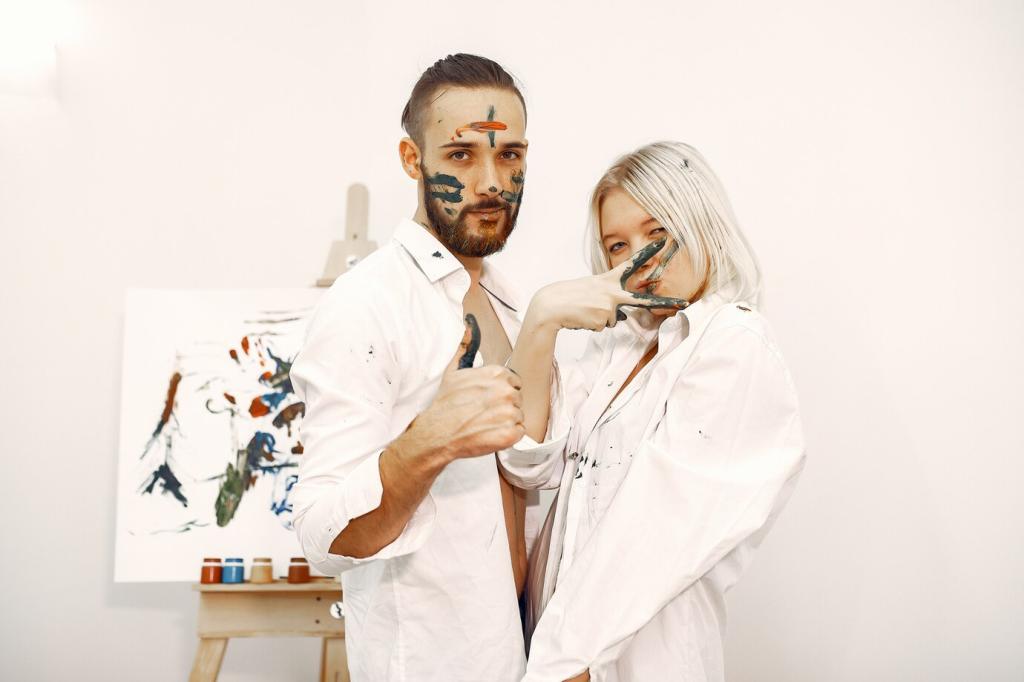
The Four Treasures of the Studio
Mixed-hair brushes offer spring and absorbency, ideal for both calligraphic bones and soft washes. Test snap, belly capacity, and tip integrity before painting. Comment with your favorite brush shape, and we’ll feature community picks in our next technique roundup.


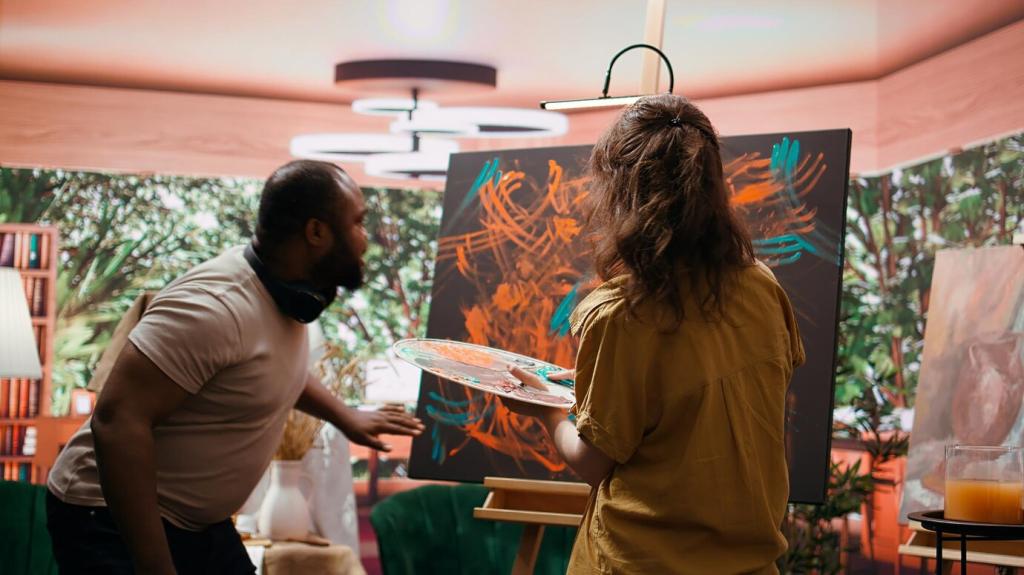
Mastering Brushwork: Lines, Dots, and Textures
Hold the brush upright, anchor from the elbow, and pull with steady breath to form resilient, living lines. Vary pressure for taper and weight. Record a thirty-line exercise, note your most consistent five, and invite feedback from our community study circle.
Mastering Brushwork: Lines, Dots, and Textures
Dian—dotting—punctuates silence, suggesting moss, blossom centers, or cliff vegetation. Place dots with intermittent rhythm, not mechanical spacing. Experiment with dry versus wet ink, then post a close-up of your dot fields to compare textures and discuss spacing choices with peers.
Ink and Water: Five Tones, Infinite Mood
Charge the brush with a dark core and clear water sheath for elegant gradients in a single stroke. Blot, reload, and test on scrap before committing. Share your moisture-control tips—paper towels, felt mats, or sponge dishes—and help newcomers avoid backruns.
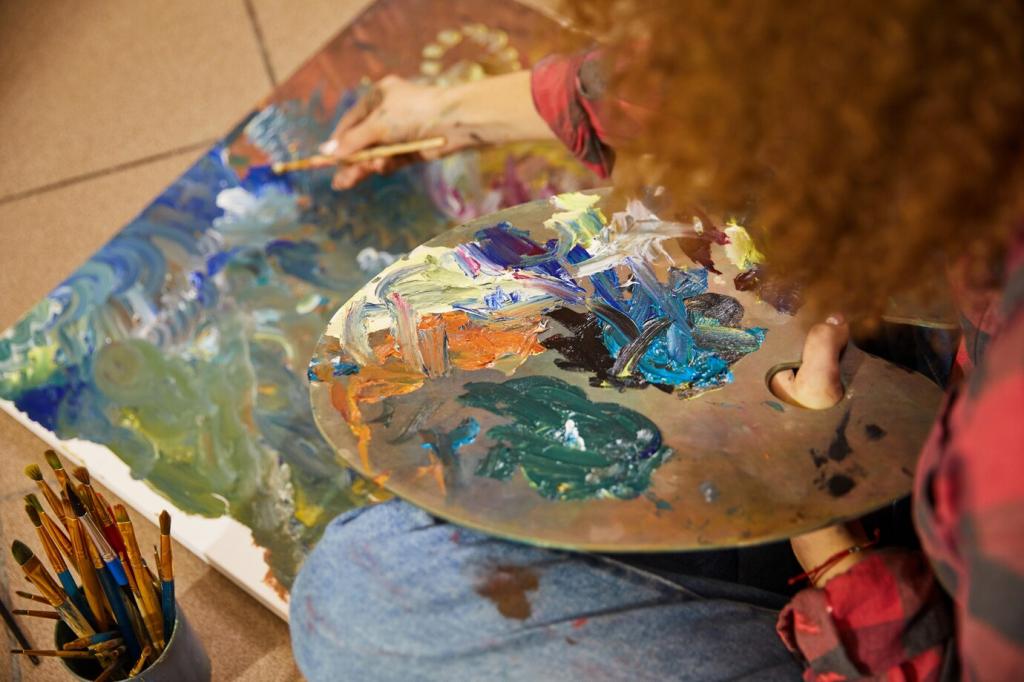
Composing with Empty Space (Liubai)
Use open areas to create pathways, letting forms point toward intentional emptiness. A lone boat facing mist hints at distance beyond the paper. Post a composition map with arrows showing eye flow, and ask readers whether your silence feels convincing.
The Four Gentlemen: Studies in Virtue
Lay vertical culms with confident bone strokes, mark nodes, then attach leaf clusters in rhythmic fans. Vary leaf lengths and overlaps for lively wind. Post your bamboo page, circle your most expressive cluster, and ask for critiques on spacing and direction.
Building Distance with Value
Push distant forms into light gray, reserve middle tones for midground, and land the foreground with decisive darks. Keep edges softer in the distance. Upload a three-plane landscape and ask readers whether your value steps convincingly suggest layered space.
Mists that Reveal and Conceal
Float wet washes to veil mountain bases, leaving peaks to glint above cloud. Reinforce only when fully dry. Post a mist study showing two timings—early and late—and discuss which better preserves softness without losing structural clarity in your scene.
Pathways, Pavilions, and Narrative
Tiny footpaths, bridges, and pavilions invite the viewer to enter the world you paint. Arrange them to lead from foreground to distant light. Share a narrative note describing who walks your path, and invite comments on storytelling through placement.
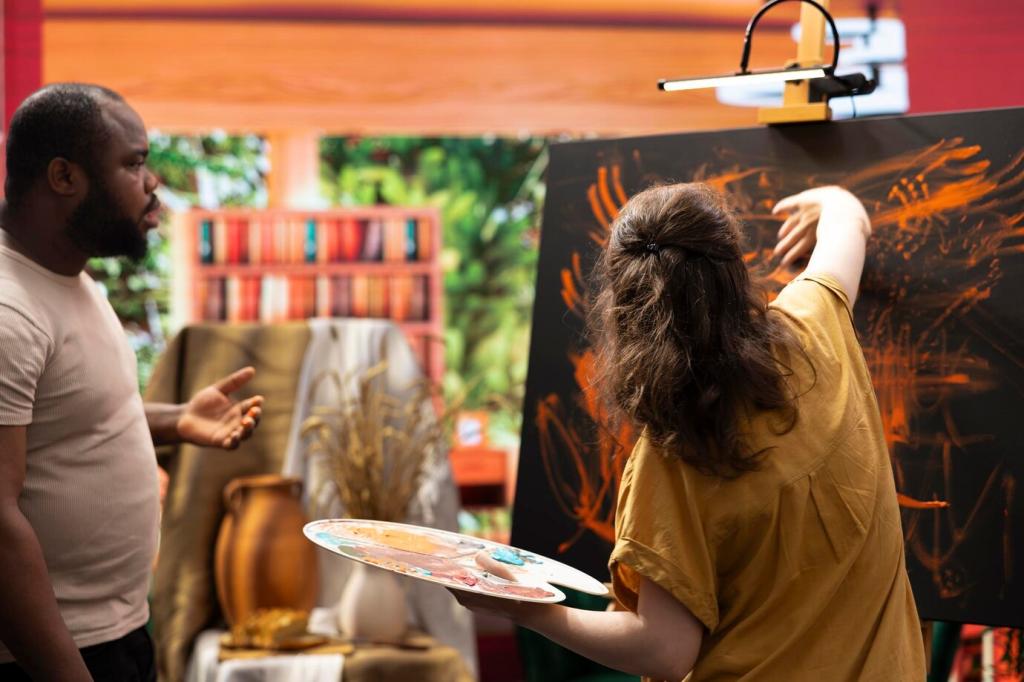
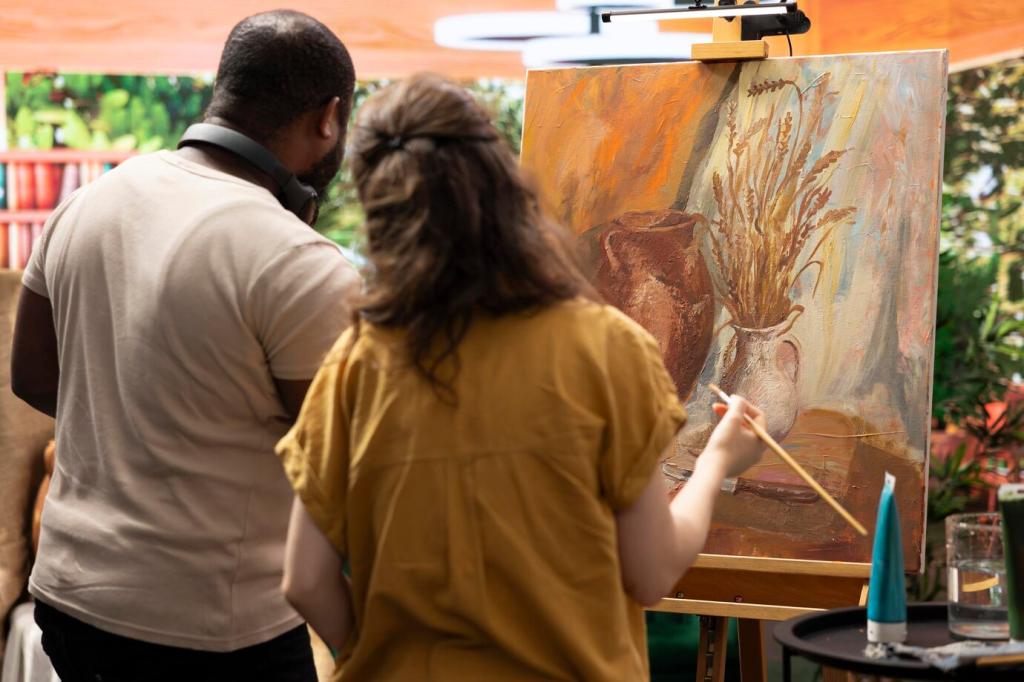
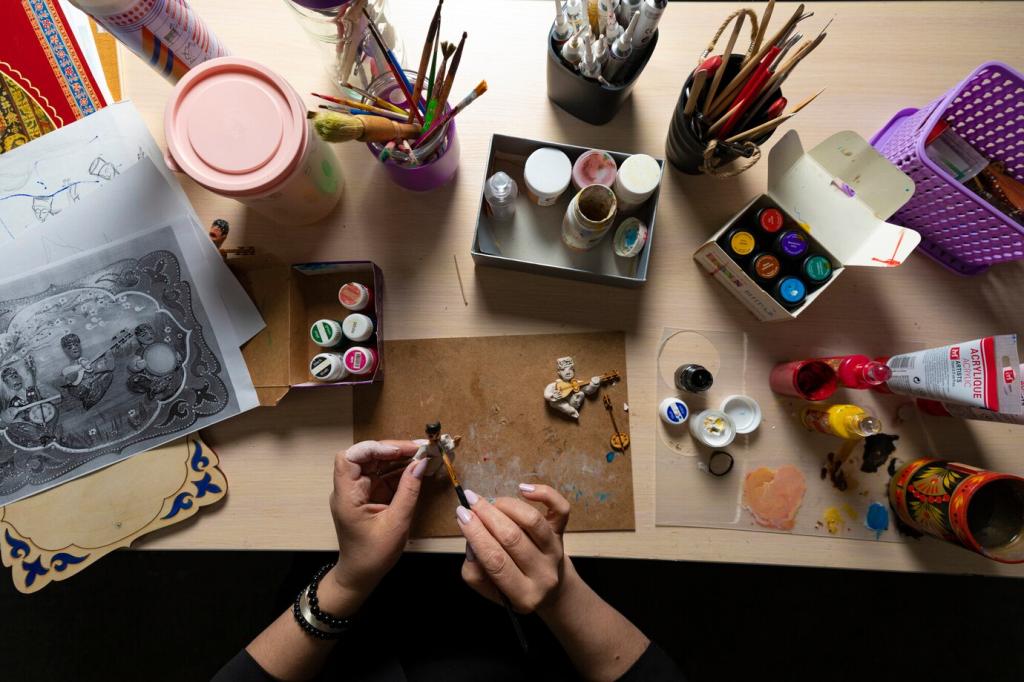
Anecdotes from the Studio: Lessons from a Visiting Master
Ink That Waited
A master asked us to grind ink for ten quiet minutes, then set it aside for ten more. “Let the ink remember water,” he said. Our first strokes glowed. Try the pause today and tell us how it changed your tonal richness.
The Bamboo That Listened
Before painting, he tapped the paper lightly where nodes would fall, listening for rhythm. The bamboo segments aligned with our breathing. Practice tapping a silent rhythm, paint in one breath, and share whether your leaf clusters felt more unified afterward.
A Scroll for the River
He painted a river bend, leaving a broad liubai curve for current. “Water is painted by what you do not touch.” Recreate this approach and post your version, noting where restraint was hardest and how the untouched white suggested flowing motion.
